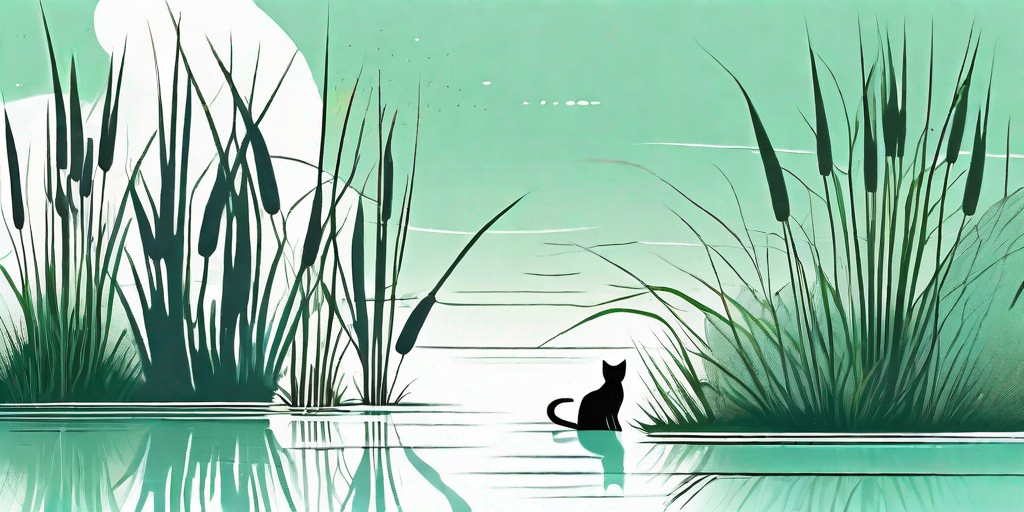
Welcome, dear reader, to the wild and wonderful world of cattails. These cheeky chaps of the plant kingdom are far more than just a pretty face in your local pond or marsh. They're a fascinating blend of survivalist, architect, and gourmet chef's dream. So, buckle up and get ready for a journey into the reeds, where we'll explore everything from their unique structure to their surprising culinary uses.
The Cat's Out of the Bag: What are Cattails?
First things first, let's get acquainted with our subject. Cattails, also known as Typha, are tall, reed-like plants that thrive in wetlands, marshes, and along the edges of ponds and lakes. They're easily recognizable by their long, slender leaves and distinctive brown, cigar-shaped flower spikes - which, incidentally, are where they get their feline-inspired name.
But there's more to these plants than meets the eye. Cattails are a veritable Swiss Army knife of the plant world, serving a multitude of purposes. They're a vital part of their ecosystem, providing habitat and food for a variety of wildlife. Plus, they're a survivalist's dream, with every part of the plant being usable in some way.
The Life of a Cattail: A Survival Story
One of the most fascinating aspects of cattails is their tenacity. These plants are true survivors, capable of thriving in conditions that would make other plants throw in the towel. They're particularly adept at colonizing areas of disturbed soil, which is why you'll often see them springing up in areas that have been recently flooded or otherwise disturbed.
But it's not just their ability to survive that's impressive - it's the way they do it. Cattails have a unique root system that allows them to spread rapidly and dominate their environment. This, combined with their ability to grow from seed, makes them a formidable force in the plant world.
From Marsh to Table: The Culinary Uses of Cattails
Now, let's move on to one of the most surprising aspects of cattails: their culinary potential. Yes, you read that right - these marsh-dwelling plants are not just edible, but delicious!
The roots, shoots, and pollen of the cattail can all be used in cooking. The roots can be roasted or ground into a flour, the young shoots can be eaten raw or cooked, and the pollen can be used as a substitute for flour in baking. In fact, cattails have been a staple food for many indigenous cultures around the world.
How to Harvest and Prepare Cattails
Before you rush off to your nearest marsh with a basket and a dream, there are a few things you need to know about harvesting and preparing cattails. First, it's important to harvest them responsibly to avoid damaging the ecosystem. Always make sure to leave plenty of plants behind to ensure the survival of the local wildlife.
When it comes to preparation, it's all about timing. The roots are best harvested in late fall or early spring, while the shoots and pollen should be collected in the spring. Once harvested, the roots can be cleaned, peeled, and roasted or ground into flour. The shoots can be eaten raw or cooked, and the pollen can be collected by shaking the mature flower spikes into a bag.
FAQs about Cattails
- Are cattails poisonous? No, cattails are not poisonous. However, they can absorb pollutants from their environment, so it's important to only harvest them from clean, unpolluted areas.
- Can you plant cattails in a garden pond? Yes, you can! Cattails can be a great addition to a garden pond, providing habitat for wildlife. Just be aware that they can spread rapidly and may need to be controlled to prevent them from taking over.
- What animals eat cattails? A variety of wildlife, including ducks, muskrats, and insects, rely on cattails for food and habitat.
So there you have it, folks - the humble cattail, a plant of many talents. Whether you're a survivalist, a gourmet, or just a nature lover, there's something to admire in these resilient, versatile plants. So next time you're out for a walk by the water, take a moment to appreciate these purrfectly wild wonders of the plant world.















